|
Score: 95+/100 (9.5+ out of 10)
What I See is Love is a powerful and beautiful children's book by Gabriella Fiorletta, and clearly one of the best children's books to come through our contest. The book explores all of the different ways people in our lives and members of our community show and demonstrate LOVE. Love comes in many forms and is shown in many ways. Sometimes, it's something obvious like a hug or kiss, other times it's something subtle like letting someone play a game with us. Love can be shown when a crossing guard makes sure the kids get across the street safely. Love can be shown by the teacher who greets us in the morning and teaches us exciting, new things. Love can be shown when someone reads with us, talks to us, and spends time with us. Love can be shown when we pick up after ourselves or clean up the environment. Love can be shown when we're courteous, respectful, and considerate to others. Love is shown by soldiers who go off to serve our country, which is featured prominently yet subtly in this book (it is implied that the main character's father is a soldier being deployed, which leads to many of the other things that happen in it). This is a really, really beautiful book with an extraordinary message for kids. It's a very important message for kids. It is so easy to forget or not recognize all of the love shown to us. This book is also spectacular to look at. We LOVED the illustrations! They have a very hand-drawn, hand-colored look as if crafted and colored with a crayon or color pencil! It's a very genuine look and feel. It's also very colorful, something that will appeal to most children. There is also a cute little part when the main character, in the absence of her father who is off to war, worries about things like dinosaurs, fire-breathing unicorns (didn't ever think that was a thing), and spiders. However, her mother tells her to leave some sweets out for them so that they'll eat that instead of her. It's a weird, quirky, and cool part of the book that we really liked! Check this out on Amazon!
0 Comments
Score: 87/100 (8.7 out of 10)
The Seventh Syndicate is an ambitious vampire-romance and urban fantasy novel by Dawn Ray. It especially shines in the realm of world building. The book follows Maggie (Marjorie McClaff), a young woman struggling with artist's block who moves from South Carolina to New York to reconnect with her best friend and former classmate, Violet, who has recently experienced a tragedy. Violet has a quirky, childlike personality and seems to love her stuffed animals, particularly her pink dinosaur. Violet seems to serve as a foil for Maggie while also mirroring her inner child, which is suppressed along with her creativity. Maggie seems to be a relatively flat character compared to Violet and others (like Armaud, Isaac, and Lenora). She serves mainly as the blank-slate protagonist thrown into the wild dual-world of the novel. This book's major focus seems to be world building. The world building is very intricate and ambitious. After being rescued from hooligans by Isaac Levin, Maggie is recruited to work for a corporation called The Lion, which serves as a front for the titular Seventh Syndicate, one of the organizations that helps to govern and protect the lives of the world's mythical or magical beings, primarily the sasvatas (vampire-like creatures), eagnaes (witches), and hunters. This secret second society or second world of cryptids intersects, overlaps, and interacts with the normal, mortal world. The sasvatas and eagnaes have rules and codes which they follow, among them being to do as little damage to the mortals as possible so as to protect and conceal their own existence. However, bands or cults of them still disregard these rules and kill/feed on humans, giving the rest of them a bad name. For that reason, hunters came about to hunt the sasvatas. Some groups of hunters, likewise, took this to the extreme and chose to target not just the bad sasvatas but all sasvatas, effectively making them one of the antagonists or lingering issues in the book as Armaud, Isaac, and company are forced to deal with them to protect their kind. The sasvatas hire retainers/bodyguards called knights (for males) and roses (for females). Maggie finds herself assigned as the personal rose to Armaud, the rough-around-the-edges leader of the Seventh Syndicate who is, in a sense, her supervisor. Initially, the two don't get along because of Maggie's stubbornness and Armaud's internal conflicts including trauma from having been turned from a human into a sasvatas in his younger life. This book has a ton of potential. If there's one thing that holds it back, it's that it develops so slowly. We were reminded of the excessively-long wedding sequence in Twilight: Breaking Dawn. Things just drag. Characters are constantly describing, detailing, and explaining things. We were kinda hoping for more actual action—maybe some fights in which the different magical characters throw down like in the Madigan Chronicles books. Again, we want to emphasize: characters keep explaining things. Yes, there's a mythos to it that grows and grows, but it also kinda bogs down the pacing. It's almost like the book gets stuck half way through as we learn more and more about the culture of the sasvatas and the Syndicates. The part that really got us excited was when a major character got kidnapped. We finally had some dramatic tension and something to keep us guessing or on edge. Unfortunately, we had to wait like 4/5ths of the way through the book to get to that. This seems to be an issue not only with this book but with others like some of the Jaralii Chronicles books in which world building takes priority over telling a story that entertains and flows smoothly. Again, this book has tremendous potential and could become a great series similar to how Jaralii Chronicles used the early world building to propel the later books. Check it out on Amazon Score: 91+/100 (9.1+ out of 10)
We're going to preface this review by saying that The Box stands out as a valiant and ambitious first attempt at a novel by Fred Falcon. This book is loaded with rich ideas, multi-layered characters, twists, and turns. This is above and beyond what you'd typically expect from a sci-fi or thriller novel. The writing is eloquent and detailed. Definitely, a lot of time, effort, and energy went into writing, editing, and rewriting this book. It shows! This book takes the reader on a slowly-unraveling mystery box adventure that spans multiple continents and timelines. It reminded us of something like Lost, Heroes, or 4400 in a sense. Fred Falcon is clearly an extremely intelligent and creative person with a lot of great ideas. However, they might want to reign that in a little bit. The main issue with this book is that there are just far too many characters and far too many things going on. At times, it's chaotic. At other times, it's almost incomprehensible. It reads and feels like ten different shorter books in a shared literary universe that got shoved into a blender that was then set to puree. The following quote from novel perfectly encapsulates that sentiment: “Sullivan sighed heavily. He wondered how a box, an equation, a missing boy, a dead grandpa, a burned down house, one of the largest companies in the world, an organization (or the Organization, as Holly was apt to remind him) all lead to Las Vegas. Still, too many pieces not aligning. He felt discombobulated, unconnected.” We read this near 600-page book three times just to get an idea of what was even going on in it. That's like 20-30 cumulative hours of reading, even more than we put into reading the Jaralii Chronicles books, which were also often complicated. Look at this list of character names and entities we gathered: Hopper Nielsen Cassie Teddy/Theodore Roosevelt McCorkle Raiden Vandra Charles Veronica Smokey Kellen Amber Ryan Aubrey Garcia Anthony Pollard Leonard Hastings Frank Clete Crittendon Jore Kennedy The Priest Weebanks Sullivan Joe Freeman Connor Reginald Illena Wilkerson Wilbur Orville Katharine O'Brien All the sisters All the random skateboarders who got mentioned for some reason All the teachers All the coaches All the neighbors The First Inhabitants The Protectors The Organization The Eight How on earth is any normal human being going to be able to keep track of all of these characters, all of their personal intricacies, and what relationship they have with the others (or the plot)? There were times when the author would casually mention a character having died or having done something, and we would literally be like, “Who?!” It was, quite frankly, very frustrating to keep track of all of these people. Perhaps you're one of those people that loves to unravel extremely complex, intricate, convoluted plots, like trying to decipher who the heck is feuding with who and over what in the Mahabharata, but that just seems like a lot to ask of the typical reader. Every major or semi-major character is given some kind of multi-page backstory similar to Lost, but some of these backstories and characters don't really seem to have enough pull on the main story to warrant their placement or the time spent learning about them. Let's unravel what we comprehended: A long time ago, on some other planet or in some parallel dimension/realm, there were a bunch of aliens who were viewed as “Protectors” of time and the knowledge that comes with existing for a long time. They had a super scientific yet somewhat magical box called “the box of enlightenment” which was basically like a TARDIS from Doctor Who. With it, a person could travel to various timelines, acquiring and spreading knowledge from different points in time that would lead to innovations and inventions like dams, weapons, and stuff. Ok, weapons weren't part of the original, benevolent plan, but it was a result of human corruption and drive for power and wealth. The Protector we're introduced to initially is named Vandra. She's taxed with taking the box to Earth and passing it down to the next protector, who is probably Hopper. We thought Vandra was the main character, but apparently she isn't. Hopper, having been exposed to the box and having solved a math equation, is transported to different timelines at different ages when/where he's often perceived as a homeless, lost, or foster kid. Hopper meets a Priest (aptly just named “the Priest”) who raises him. Then he disappears and reappears in modern times as an older teenager, befriending some kid named Connor and lying to him about being from a family of marathon runners. This matters for some reason. Meanwhile, there's this precog/oneiromancer/prophecy-having-character named Cassie who keeps having the same dream about a boy (obviously Hopper) being chased by bad guys and needing her help. In fact, a woman's voice (possibly Vandra's) keeps telling her to help him. Cassie is a teacher. She's also African-American. We thought Cassie was going to be the main character, but apparently she isn't. Meanwhile, there's this 15-year-old kid named Teddy (Theodore Roosevelt McCorkle III) whose dad, a megalomaniacal billionaire who owns a sketchy company called IDEA and is one of “the Eight”--the leading members of a secret organization called “the Organization”--wants to capture Hopper and misuse the powers of the box for personal gain. Teddy and his dad pretty much have the exact same name (minus the III), which isn't confusing at all in a novel with like 100 major characters. Anyway, Teddy overhears his dad talking to a mysterious figure named Raiden about the box and its powers. Teddy gets the bright idea of getting it and using it himself, becoming corrupted by it like it's the Infinity Gauntlet. Apparently, the Organization captures, interrogates, tortures, and kills time travelers they believe have knowledge of the box. Reginald is some very dedicated mercenary they hired to capture Hopper. Weebanks is some tech person the other characters call when they need a convenient techy solution like that one nerdy, weird lady in that one cop show we're forgetting the name of, or Otacon. For some reason, we only remembered them because of their funny name. Sullivan is some kind of detective or agent from an intelligence organization who is trying to solve what the hell is going on because no one but the author knows. Wilkerson is McCorkle's second-in-command and a ruthless enforcer of his will. Ultimately, this loaded cast of characters are in two separate, competing camps: 1. those who want to save Hopper—the new Protector—and, thus, the box in order to use them for good, 2. those who want to capture Hopper and the box in order to use them for self-serving reasons (like to “rule the world” ...cause of course...). Ok, there's a third camp: the characters who are just there to make the main characters seem like real people with actual family/friends/relationships--people who do little more than stand around forwarding the plot like NPCs. We greatly commend the author on their ambition, creativity, and effort. That's why we're giving this a rather high 9.1+/10! If you want to unravel this Gordian Knot of a plot and cast of characters, check it out on Amazon! Score: 93+/100 (9.3+ out of 10)
Marching Through Time by Frankie Billy Tadius is a fascinating deep-dive into the history and cultural significance of the esteemed Sarawak Police Band in Malaysia. We were extremely impressed us with the weight and magnitude the author gave this topic, which is unknown and obscure to most westerners. However, for anyone who is interested in music and/or the history and culture of Malaysia and Southeast Asia, this is really a captivating read. Similar to Genesis of a Genre, which we also read this season, this book takes the subject of a band and shows us many of its nuances and intricacies. Let's face it: music is powerful. Alongside things like religion and art, it is one of the cornerstones of most cultures. In a strong sense, it IS art. Think about how music can change the mood in a car when the radio is blaring, or affect how we perceive a scene in a movie. Think about how hearing a nation's national anthem can bring a stadium full of people—many of whom are from different political parties, different races, different religions, and different walks of life—together in unison and solidarity. That's the power of music. That's the potential that Malaysia's leadership and the Colonial British saw when they founded the Police Band in Malaysia. They based this on the success of the military bands, which had shone a positive light on the military branches, the country, and its government. There's something very humanizing and disarming about a band. Music is often associated with happiness, pleasure, joy, and other positive feelings. It's associated with parties, parades, ceremonies, concerts, and other events that bring people together, usually to celebrate or enjoy something. This is especially important considering how militaries and police forces are often viewed as powerful, authoritative, oppressive, weapons-wielding forces. To have a band like the Sarawak Police Band can really help to assuage that image. The author tells us that the Sarawak Police Band bridges cultures by performing music that's significant not only to Malaysia or Sarawak, but to Southeast Asia and China. They perform at many music festivals, parades, and ceremonies. They also help to keep the music of Malaysia alive and in the public view. Furthermore, they spread the love, practice, and talent of music to the youth and others in Malaysia by being involved in mentorship and educational programs. This book was eye-opening and enlightening. If it had any one weakness, it's that it could've been trimmed down with less repetition of the same information. Phrases like “the transformative power of music” occur upwards of 100 times. Later on, when the author describes how active the band is on social media, he repeatedly describes that they respond to the comments of fans. Generally speaking, you don't want to repeat information if you don't have to. At times, it does seem like the author had an outline and filled it out similar to someone filling out an application. You know like when you're asked for both your billing address AND mailing address and you don't have an option to check the “Same as...” box? With that said, this book is very interesting and relatively well-written. It is solidly written. There weren't any mistakes that we noticed. Also, the formatting is great and the book is very structured. It also contains invaluable, first-hand research on the topic! Check this out on Amazon! Score: 93/100 (9.3 out of 10)
The Overthinking Orbit is an excellent self-help book by Erin George that champions such anxiety-relieving techniques as mindfulness, journaling, and meditation. It also encourages the reader to tackle anxiety via more down-to-earth/common-sense methods like improving one's sleep and eating better. This book takes on the all-important topic of stress, something that often rears its ugly head in the form of anxiety, worry, and overthinking. These are the types of stresses that can cripple us psychologically (and, to an extent, physically/physiologically). The book tells us that worry causes a “ripple effect” which disrupts other aspects of our lives, our health, and our relationships. It can affect us at work and school. It can keep us up at night, cause us to under eat or overeat, compounding the problem. The author points out that anxiety has negative physiological effects. It causes our stomachs to produce more acid, causing ulcers. It can cause diarrhea or constipation. Worst of all, it can lead to cardiovascular disease, the leading cause of the death in the United States. It's no secret that anxiety that raise your blood pressure, placing pressure on our heart and arteries. The author talks about how the brain has a very special ability to change and reorganize itself, possibly becoming less anxious and more positive. This is made possible by such means as neuroplasticity. We can learn or relearn good/positive habits while deleting or unlearning bad/negative ones. Mindfulness is one of the key techniques promoted in this book. Mindfulness might best be described as being aware of your thoughts/thinking. If you find yourself thinking negative things, become aware of it. You can't address a problem if you don't first acknowledge and identify it. Journaling is another key technique. Similar to how keeping a workout journal or food diary, journaling helps you to be accountable for and aware of your thoughts rather than putting them off and letting them linger. One of the journaling techniques that we loved the most was the brain dumping exercise. The truth of the matter is, so many of us just have too much on our minds. Instead of listing them or scheduling them, we just try to memorize and internalize all of it. That can obviously have negative effects. It can be overwhelming! This book takes a very holistic approach at the mind and body. This book takes the premise that he who has hope has health, and he who has health has everything. The mind and the body are linked. Mental and psychological health are just as important as physical health. When you starve the body or feed it bad foods, how can you expect the mind to react positively? When you allow negativity to rule your mind, how can you expect your body to be fit and functional? The author chose a very interesting way of framing different types of overthinking, featuring three characters who suffer from overthinking, worry, and anxiety in one way or another. There's Anxious Andy, whose anxiety is so bad that it gives him GI problems. There's Owen, the over-analyzer who tries to plan and be aware of everything that's coming up in the future (despite the fact that we can't control or accurately predict the future). And, lastly, there's Whitney, the “Queen of Overthinking.” Owen was probably the most memorable. Owen is someone who checks the weather on a daily basis and schedules on his calendar obsessively. However, whenever something unexpected comes up, he crumbles. This is a very important thing to learn from, making the case that we can only control the controllables (ourselves), we can't predict the future or try to control it. All in all, this is a solid self-help book. Check it out on Amazon! Score: 94/100 (9.4 out of 10)
We were extremely impressed by the deep, creative concepts and compelling characters in The Superhero of Emotion by Emiliano Forino Procacci! Leading the charge of compelling characters is Nicola, an Italian scientist and visionary who strives to invent a way to extend and improve human life on Earth. Nicola essentially follows the Dr. Frankenstein archetype, although his motives seem virtuous throughout the process. Unfortunately, the world is full of corrupt, power-hungry, megalomaniacal, and unscrupulous people who look to weaponize every invention or to use it for personal gain. Similar to Walter White's actor in Godzilla (2014), we were surprised that Nicola—who seemed like he was going to be the predominant protagonist—takes a backseat to his son, Oscar, relatively early on. But Nicola's influence and legacy lingers throughout the book, especially inspiring Oscar, someone who adopts many of his father's positive traits. Oscar has a good heart, and is ultimately a likable protagonist that you find yourself rooting for. Oscar is, unsurprisingly, the titular “superhero of emotion”--born with a gift to influence (“manipulate”) the emotions of others. This book seems to take the premise that the ways of the world are largely influenced by emotions; and, unfortunately, pride, arrogance, and greed rank near the top of those emotions. These negative emotions are embodied by the villain, Alexandros, a man who seems possessed by pride, arrogance, and greed to the point of megalomania. He believes that he is “god” in his own mind and wants to play god to the rest of humanity, using the good that Nicola and Oscar brought/bring to the world for his own personal advancement. This is similar to what happens in real life whenever someone comes up with a major invention or innovation—someone out there is willing to pay, lie, or steal to misuse the invention or innovation. The Wright brothers gave humanity flight and aviation, but the governments and militaries of the world strapped guns to them and loaded them with bombs and missiles in the century following that. Even the Internet was largely commissioned for military purposes during the Cold War. There are also people out there who take advantage of the good will of others. Elizabeth Holmes is one such example, committing multi-million-dollars worth of fraud to promote a medical concept that was unproven and didn't work. You kinda get the sense in this book that, while death sucks, it exists for a reason. If people can't die, then evil people like Alexandros or Hitler can live on indefinitely, causing widespread and long-lasting devastation and suffering. Anyway, that's what we gathered from it. Emma is also an appealing character, which is funny because she is really in the background most of the time. There's something about her that's charming and alluring despite the fact that she clearly plays third fiddle to the rest of the cast. For some reason we can't quite describe, we found ourselves drawn to her and wanting her to be safe and to succeed in everything she was doing. There's also a really awesome rant in this book in which a character hijacks a lecture and gives a speech about how workers become like slaves to the system: chained to their desks and forced to work like ants until retirement/death with only the illusion of freedom and rights hanging over their heads. To quote: “...the dictatorships of the past understood that social control is not achieved by force but by money!” and “The global economy is the real ruin of all. Millions of people every day are induced to buy consumer goods, and the more they do it, the more they become slaves because they have to work more to obtain more money to spend. Without realizing it, they throw away the best years of their lives within the walls of an office until one day, they wake up and discover that they are old and entitled only to a paltry pension.” Now, we champion capitalism—it's the best system that we've found so far—but there is truth to the above argument. Many of us work to make others rich: so that the CEO can buy a mansion(s) while we live paycheck to paycheck just to pay the rent. There's actually a lot of existentialism and economics in this book that we appreciated. Check this out on Amazon! Score: 95/100 (9.5 out of 10)
Puppy Comes Home is a heartwarming, happy, and uplifting children's book that follows a family and a dog as they go through the puppy stages of her life. Abbey Rose is an adorable Great Dane puppy, the largest puppy in her whole litter. What also helps her to stand out from her brothers and sisters is the white pattern that adorns her nose, paw, and chest. She's absolutely adorable! Our all-time winningest artist, Anthony Richichi really captures Abbey Rose's cuteness and uniqueness. He did the same in capturing Alfie's cuteness and uniqueness in Alfie. We've said it before, but Richichi is especially adept at illustrating animals (and non-human creatures). Abbey Rose is curious, adventurous, and sometimes even mischievous, as all good little boys and girls are! As a puppy, she does things like chew on shoes, ruining them with her sharp teeth. However, most of the time, she's the life of the party—a positive force for comfort and good. People love to pet her because she's the tallest dog, and thus the easiest to reach. We get to see how Abbey Rose touches so many lives positively, bringing joy and happiness to all who encounter her. This book as a bittersweet backstory or undertone as Abbey Rose was born with too big a heart (literally)--a rare and often fatal condition. Abbey Rose was not given long to live, but by golly did she LIVE! This book doesn't dwell in the loss or even the inevitability of it. Instead, the book simply portrays Abbey Rose as living a very happy and full life—a complete and fulfilling life. This book memorializes Abbey Rose in the most loving, caring, genuine, and beautiful way possible: by showing all the things that she got to experience, and all the love she gave and was given. It's hard not to shed a tear when thinking about this. One of our favorite parts of the book was when Abbey Rose's parents decided to dress her up for special days: Santa Claus on Christmas, a referee for a football game, and a ladybug for Halloween. What this tells the reader is that even that even though Abbey Rose didn't live as long as most other dogs, she still experienced a lot and accomplished a lot. Check this out on Amazon! Score: 80/100 (8.0 out of 10)
David Soh Poh Huat's may be on to something in terms of the benefits of soursop leaves, something that the grand majority of the public isn't aware of. David's heart is certainly in the right place, and we love and admire his quest to help people who are suffering from cancer and other life-threatening ailments. In his previous book, Care Giving Gift of Unconditional Love, it was clear that David had dedicated his life to helping as many people suffering from these diseases and ailments as possible. This book also comes from a place of love, dedicated to a sister to died from cancer yet fought a valiant and long battle against it. It's incredibly short, brief, and oddly specific, similar to David's previous book. Also, similar to David's previous book, it isn't written particularly well. English is certainly not David's first language, and it surely shows from time to time. However, it's actually not too difficult to understand what he is trying to communicate. Ultimately, David is advocating for the use of soursop leaves from soursop fruits to fight cancer, particularly when used in the form of tea. Whenever someone comes up with something claiming it to be a cure or remedy, our BS/quackery radar automatically gets raised. We're not new to herbal supplements or “special foods” being advocated as some sort of panacea. St. John's Wart, garcinia cambogia, apple cider vinegar, and green tea are some popular examples. However, believe it or not, there is some research and science backing the benefits of soursop leaves in fighting cancer, unfortunately, most of the research is on mice (not humans) or on cultures. According to what we found on cancercenter.com, a 1997 study published in the Journal of Medicinal Chemistry found that soursop compounds were even more effective at destroying breast cancer cells than chemotherapy. However, this was in vitro (essentially in a test tube). In other words, it was performed outside the human body. Perhaps the most cited example is the 2016 study published in Scientific Reports that showed anticancer properties of the compound versus prostate cancer cells. However, this study was performed on mice. With all that said, it's frustrating to know that a treatment for cancer—one of the most deadly, destructive, and devastating of all diseases—may exist, yet most of the public is left blind or unaware of it. Could you imagine if this could help some sufferers? Could you imagine if it could save lives? Could you imagine if it could provide some hope and/or comfort? Perhaps the most valuable part of this book are some of the anecdotal case studies. There are about a half-dozen of them, all detailing different ways in which the use of soursop leaves improved markers for cancer. Some of these improvements were achieved in a month and a half. Some of these improvements came in just five days! For bringing this impressive and promising supplement into the public light, we are awarding this book an 8.0 out of 10. Check it out on Amazon! Score: 90/100 (9.0 out of 10)
Graduation can be a time full of excitement and unlimited possibilities... and/or it could be a time of anxiety, dramatic changes, and even heartbreak. Senior Thesis by Darren Greninger is a competently written script about a recent grad, Landon Riser, who seems to be trying to find his place in the sun, swiftly suffering a breakup, struggling to make a fantasy football podcast profitable, and deciding on which college he'll attend (if at all). His relationship to (or lack thereof) with Aurora seems to form the backbone of the plot with the two going through a difficult and somewhat traumatic transitional period during senior week. Aurora expects more for herself, her life, and her boyfriend. She wants to be with someone who has all their ducks in a row, their sheep in order, a career, goals, and a path toward a stable life. Unfortunately, Landon has none of that. Landon is, for all intents and purposes, a bit of ne'er-do-well and a loser. This makes him both an annoying character and a somewhat compelling one. After all, we can all sympathize with someone who keeps trying and keep failing. However, we can also be frustrated when they just can't seem to make things work. Originally, we were not going to be too kind reviewing this book. Overall, the plot and general tone is really... silly and goofy. It ranges from lighthearted to absurdist and ridiculous, a lot like one of those teen movies that are just there for the quick, cheap chuckles and sexual shock value. Ok, let's call it escapism. There's really nothing in this story that grabs you and makes you care about the characters. They don't seem like real people, more like action figures (yes, toys) being made to say and do silly/goofy stuff. In all fairness, this is par for the course in modern script writing, even for big TV and film studios. It almost seems like scriptwriters have been taught to shock the audience rather than writing what seems natural or real. It goes back to the question: Who talks like that? It's pervasive in all types of media, not just this book. It is, like we said, a trend. We were going to start this review by saying something cheeky like: “The title Senior Thesis is perfect for this novella because it reads like the answer to an end-of-year prompt/project that was done at the last minute and without planning—completely shot from the hip and by the seat of the writer's pants. The book flies from one thing to another, seemingly filling space while eliciting occasional chuckles and eye-raises.” However, this book/script does shine in one way: being a competently-constructed script. It's rather impressive that, from beginning to end (for over 150 pages), every scene is detailed perfectly. You know who is talking, who they're talking to, what location the scene is being shot/taking place at, whether it's inside or outside, and sometimes even what the weather is like or what the background is doing! That's actually very impressive, and shows a level of skill and competency on behalf of the scriptwriter that's admirable. Another thing we enjoyed about the book, despite it being quite absurd, was the Nerf war that the school holds. Yes, we realize that it's analogous or a metaphor to the way that the education system and society pits people and students against each other in a dog-eat-dog way. It reminded us a lot of Battle Royale or the airsoft war in School Rumble. It was extra funny how seriously the competitors took it, and especially funny how the school president seems to not only condone but celebrate this “violence.” In the backdrop, faculty and staff are described as assaulting each other American Gladiator style, knocking each other into pits of gymnastics blocks. What kinda ruins the immersion or realism of this scene is how adept all of the characters are with their weapons/equipment. They know how to load, aim, and fire their weapons without fail. They even know how to deploy their Nerf grenades. This is all without training, explanation, or prior (described) experience, mind you. The other thing about this book is that, despite the focus on Landon and Aurora, their dynamic seems off for some reason, and it's actually quite hard to cheer for either of them. Landon, first of all, is unlikable in how apprehensive, aloof, and overall ineffectual he is as a character/human being. Aurora is unlikable because she comes across as mean, condescending, and selfish. Thankfully, the rest of the cast helps to liven things. This includes Chester, James, Rebecca, and Maggie. One of the great things about this book, as we alluded to before, is that it has a certain self-aware/referential humor to it. For example, Aurora is described as performing a “Hills-Are-Alive” style of twirling, a familiar and funny reference to The Sound of Music. When the characters are engaged in their Nerf war, a female spectator yells from the crowd: “Finish her.” This is a comedic reference to Mortal Kombat. The value in this book is that it is well structured as a script and demonstrates that the writer has the potential to craft scripts that might be seen on Hallmark Channel or Disney Channel. Check it out on Amazon! 94/100 (9.4 out of 10)
Unhunched by Aesha Tahir is an excellent health and wellness book that focus on the topic of posture and its importance to everything we do in life. Indeed, our posture influences how we walk, how we run, how we stand, how we sit, how we sleep, and even how we think. Few things are more important for the mind and body than good posture. Tahir takes a fascinating dive into the cultural and evolutionary history of posture, exploring almost every aspect of it imaginable. We learned a lot! One of the things that really stood out to us as interesting was how the author discussed how hunching became a “style” during the 20th century. Families sat on couches, sitting around radios and television sets while leaning forward, something that is portrayed in many pictures, commercials, and ads from the 20th century. This style/issue became even more pronounced as cell phones and computers came into play. Many people found themselves sitting at desks or in office settings where it became normal to have one's chin and head down, leaning with the head, chest, and shoulders forward. This is something we didn't really think about. The author made special note of how head and shoulder positioning influences not only our posture but our overall heal outcomes. We were shocked by some of the statistics and research that the author mentioned. Here are some of the most shocking: - A UCLA study found that bent over, hunched back posture was found to double the risk of death from respiratory and cardiovascular diseases. - The inability to hold a single-leg stance for 10 seconds by a middle-aged and older adult doubles the risk of death from all causes All in all, poor posture increases the risk of death from many disease including cardiovascular, respiratory, and metabolic ones. It actually makes perfect sense. How we sit, stand, walk, and sleep influences things like our circulation. One of our favorite things about this book is that the author reiterates that good posture isn't “forced” or “robotic.” Rather, good posture is something that should come naturally. Usually, the advice you get from “experts” is to force your shoulders and head back into a position that seems overcompensatory and unnatural. This is why many gimmicky “posture” device and apparatuses exist. We've seen our share of Amazon and “As Seen on TV” products that claim to fix your posture. When you squat or deadlift a lot of weight, the issue of posture really rears its ugly head. You start to realize that overcompensating by posterior pelvic tilt and “arching” can actually be just as destructive and dangerous as the anterior pelvic tilt that gets most of the attention. A neutral spine is not the same as an arched spine. That is a gross misconception that this book thankfully shines light on. Despite its somewhat mundane subject matter, this was a really fascinating read! Check this out on Amazon! |
Archives
July 2024
Categories |

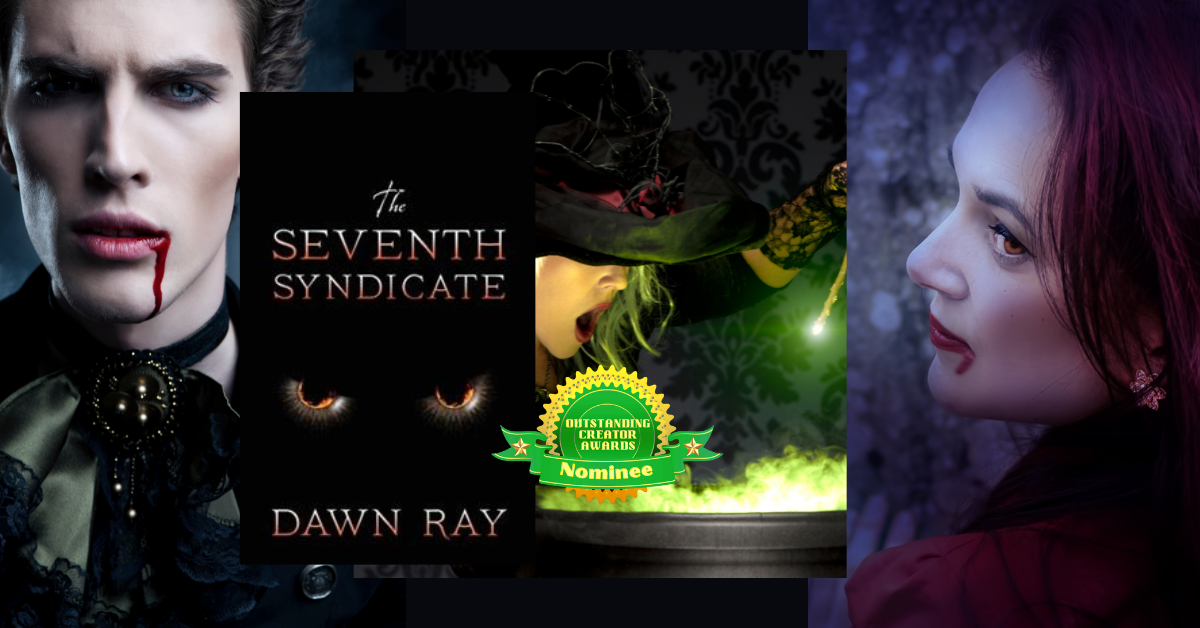
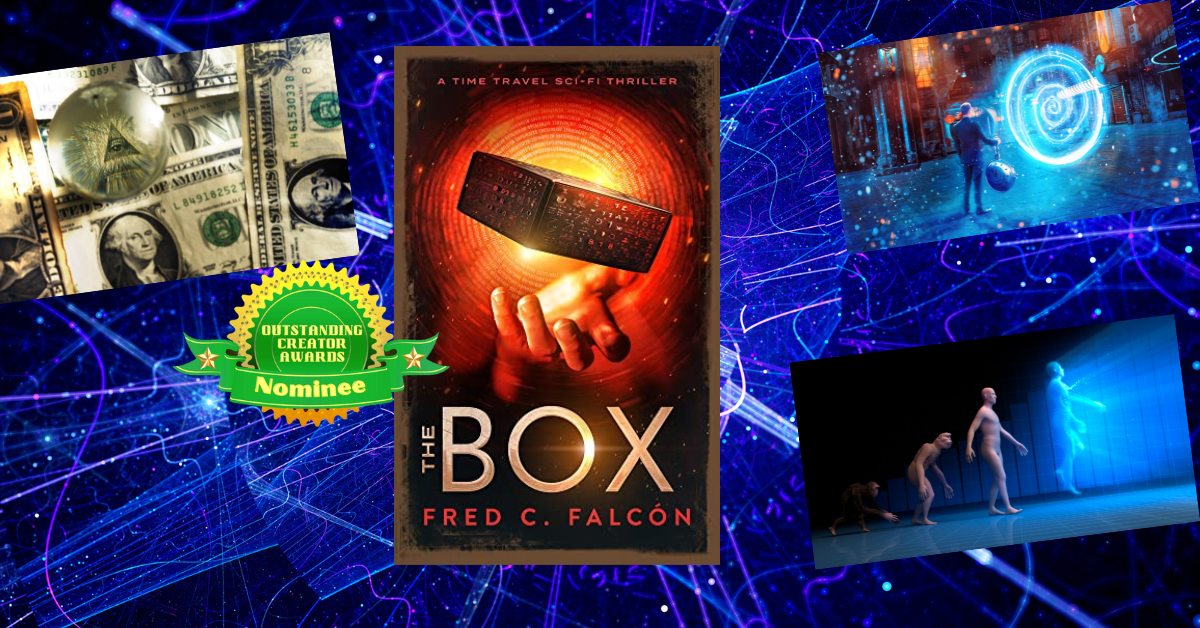

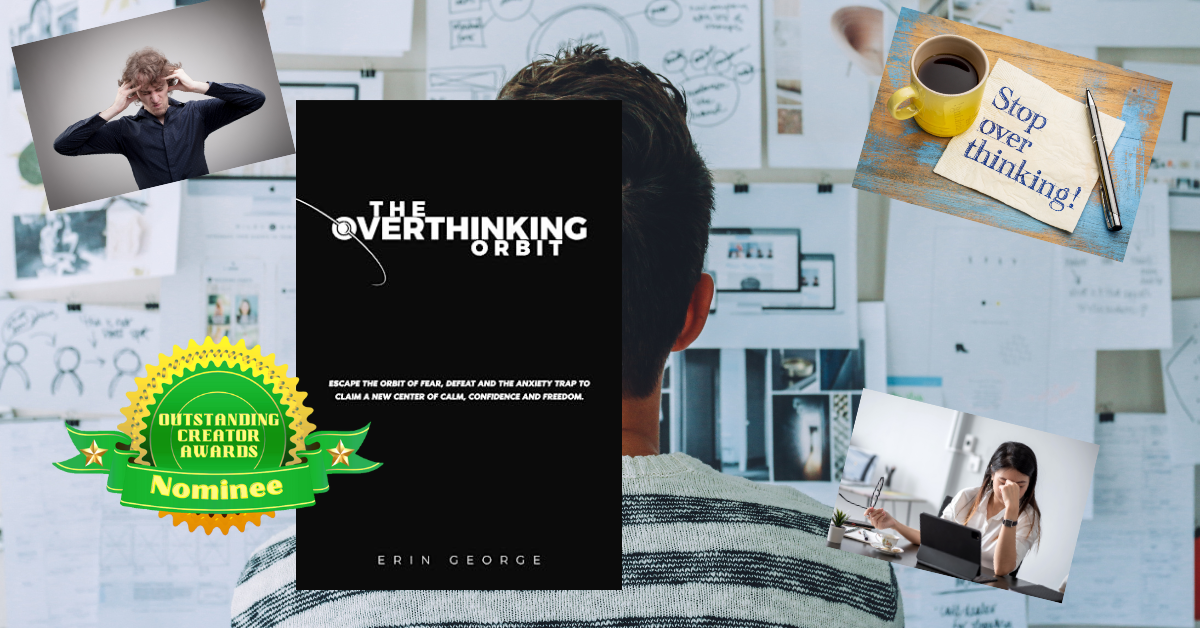
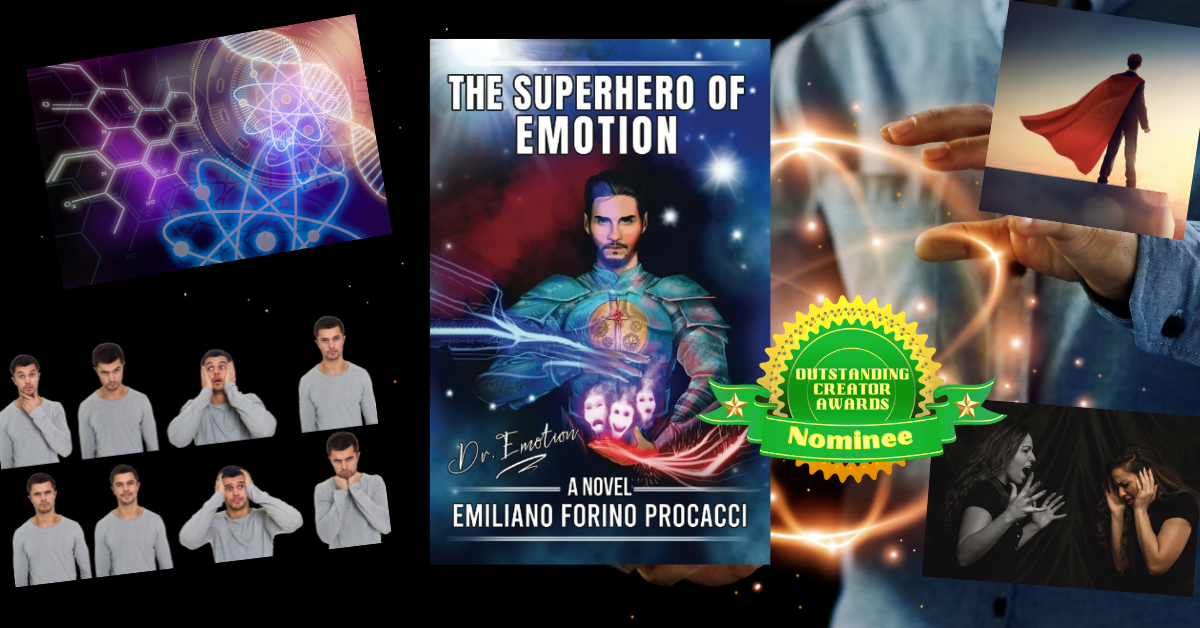


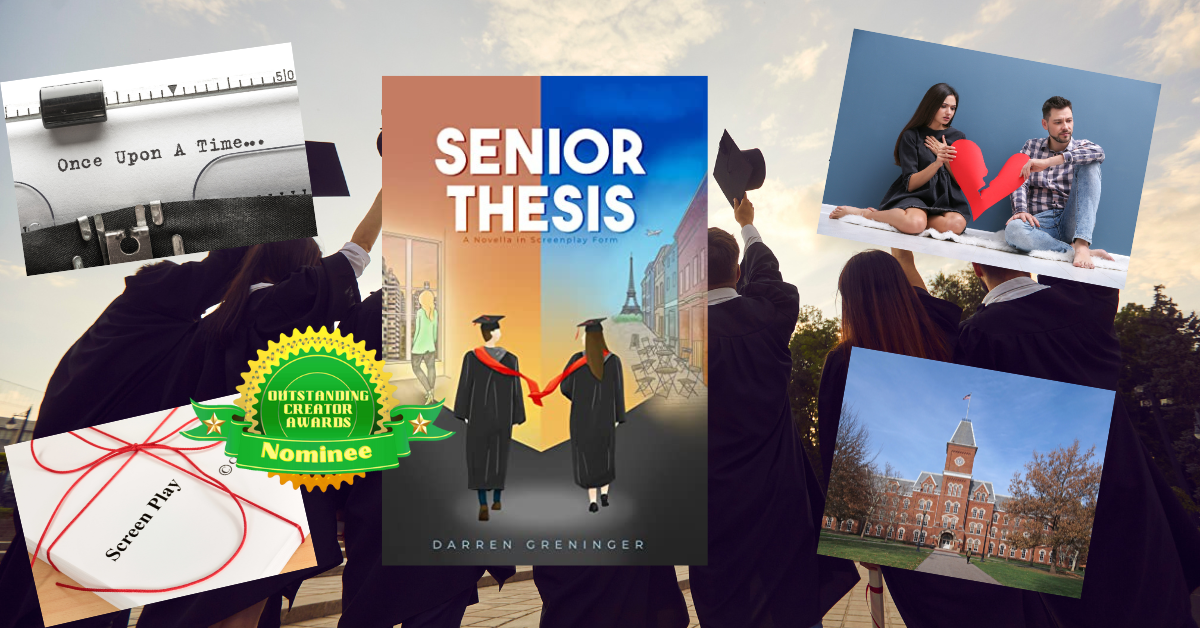

 RSS Feed
RSS Feed